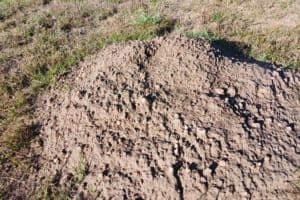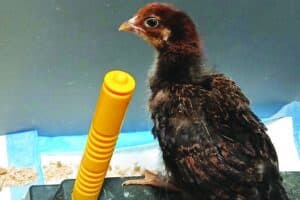Longtime local journalist Bill Radford and his wife, Margaret, live on 5 acres in the Falconarea with chickens, rabbits, dogs, cats, a flock of parakeets, goats and two horses. ContactBill at billradford3@gmail.com.
Exciting news: I bought a new lawnmower.An electric one, actually. Battery powered. No need for a cord; no hauling around a gas can.But the question is: How much will I need to use it?It has been a decent monsoon season in terms of rain. (The North American Monsoon, as itís known, typically ramps up in July and stretches into August, according to the Colorado Climate Center.) But it hasnít been enough to make up for a dry winter and spring. According to the U.S. Drought Monitor, 100% of El Paso County is abnormally dry; 77% is suffering from moderate drought, meaning: ìRangeland growth is stunted; very little hay is available. Dryland crops suffer. Wildfires increase.îI use my ìmower indexî to monitor conditions. We have 5 acres of land; the pasture takes up 3 Ω acres of that. My keen mathematical skills show that it leaves me with 1 Ω acres to maintain. (The pasture usually gets mowed once a year but by somebody with a tractor, not me with my little push mower.)There have been some years where enough snow and then rain fell that Iíd have to mow the whole property every week or two by June, if not before. This summer, as of the end of July, thereís one large section to the north that I still have had no need to mow; other areas have only been mowed once.Donít get me wrong, I donít necessarily want to spend all my weekends with my mower. In fact, when we first moved to the prairie, I thought of keeping the land ìnatural.î But I didnít like the unkempt look of a not-mowed property, and I was also aware of the fire danger from too-tall dead grass.The issue of mowing aside, I want green to dominate the landscape ó both for the health of the land and the health of my mind.From an online article on ìGreen in Color Psychology:î ìGreenís calming effects might derive from its association with nature, which people typically experience as relaxing and refreshing. Some researchers think the positive association with green is hardwired in our brains from evolution: Early humans knew that green in nature indicated a place where they could find food, water and shelter.îSo, lush, green pasture? Good. Barren, brown landscape? Bad.We moved to the prairie nearly 10 years ago. As in Stephen Kingís ìThe Dome,î we wondered for a time if there was a dome ó or at least a doughnut hole in the weather pattern ó that kept rain from falling in our neighborhood: There could be rain all around us, but not upon us. That belief was eliminated on one glorious if ultimately frightening night when a storm settled over us, sending sheets of rain all night long; when the rain was done, our rain gauge showed an astounding 3 inches.No such precipitation this year. And I still get anxious when Iím driving home in rain, always wondering if that rain will reach our little patch of prairie. Sometimes yes, sometimes no.Whatís ahead? Short term, the Rocky Mountain Area Climate Outlook calls for ìabove normal significant wildland fire potentialî across parts of the area through September ìdue to long-term precipitation deficits and ongoing drought in conjunction with expansion of above normal temperatures and below normal precipitation.îLong term, the Environmental Protection Agency warns, ìIn the decades to come, rainfall during summer is more likely to decrease than increase in Colorado, and periods without rain are likely to become longer.î The NOAA National Centers for Environmental Information acknowledges that droughts are ìa natural part of Coloradoís climate,î but warns of a pattern of rising temperatures and ìincreased drought intensity.î And researchers warn that in 35 to 60 years, parts of the Mountain West, including Colorado, could see ìlow to no snowî winters if greenhouse gas emissions arenít curtailed.Meanwhile, the annual hordes of grasshoppers have descended upon us; our greenhouse, which we set up last summer to protect our garden from them, has been battered enough by winds that the front is ripped open, allowing the grasshoppers in to feast.While the grasshoppers arenít new, I wondered if climate change might be making the problem worse. The answer, apparently, is yes.Last year, Colorado was among states that experienced one of the worst grasshopper outbreaks the country had experienced in decades, according to reports. For this year, the U.S. Department of Agricultureís Animal and Plant Health Inspection Service actually predicted low numbers of grasshoppers in most of the western United States, but our grasshoppers donít seem to have gotten the memo. Other reports warn that warmer, drier winters are giving a boost to grasshopper populations. ìClimate change may bring us more grasshoppers in the future in increased frequency, duration or severity,î former U.S. Fish and Wildlife Service biologist Sharon Selvaggio told CNN last year.That may be good news for our chickens, who love chasing and eating grasshoppers, but bad news for farmers ó and for our garden. Perhaps a nice flash flood could come along and wash them away.





